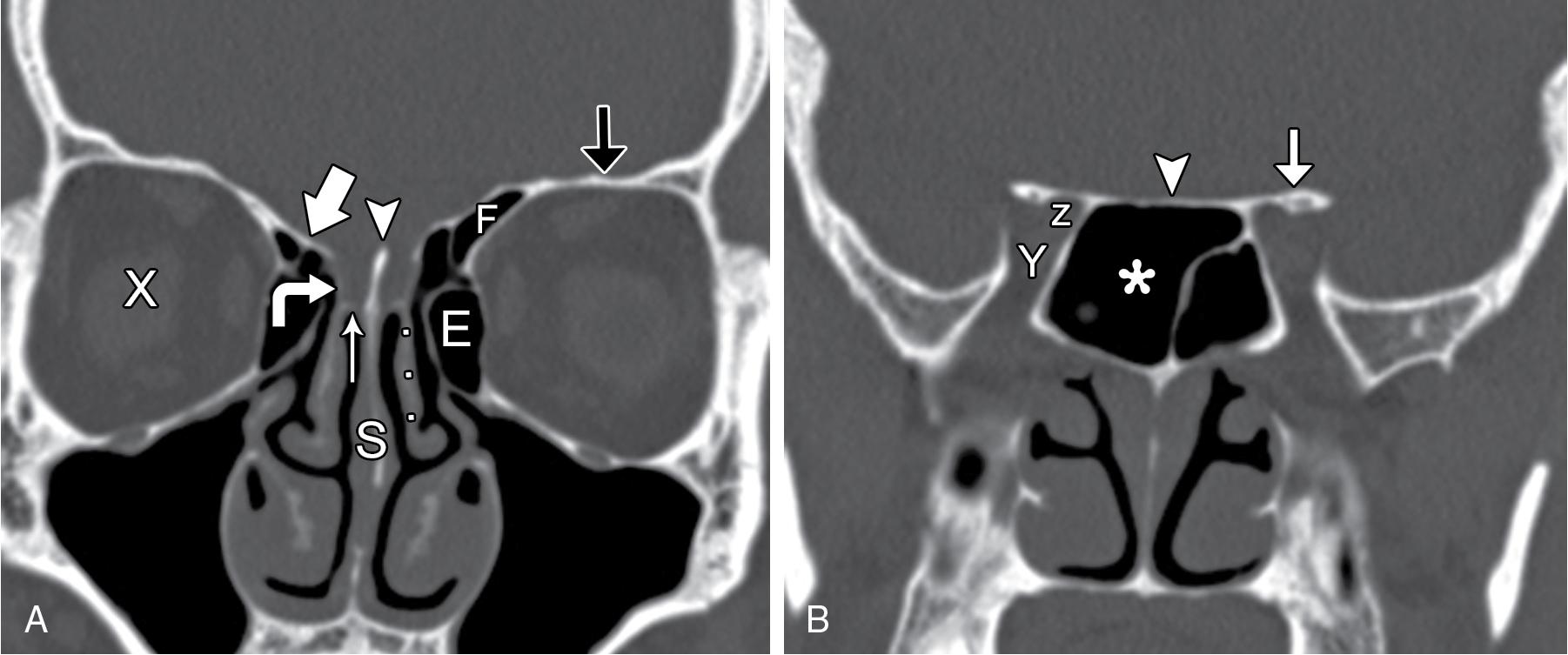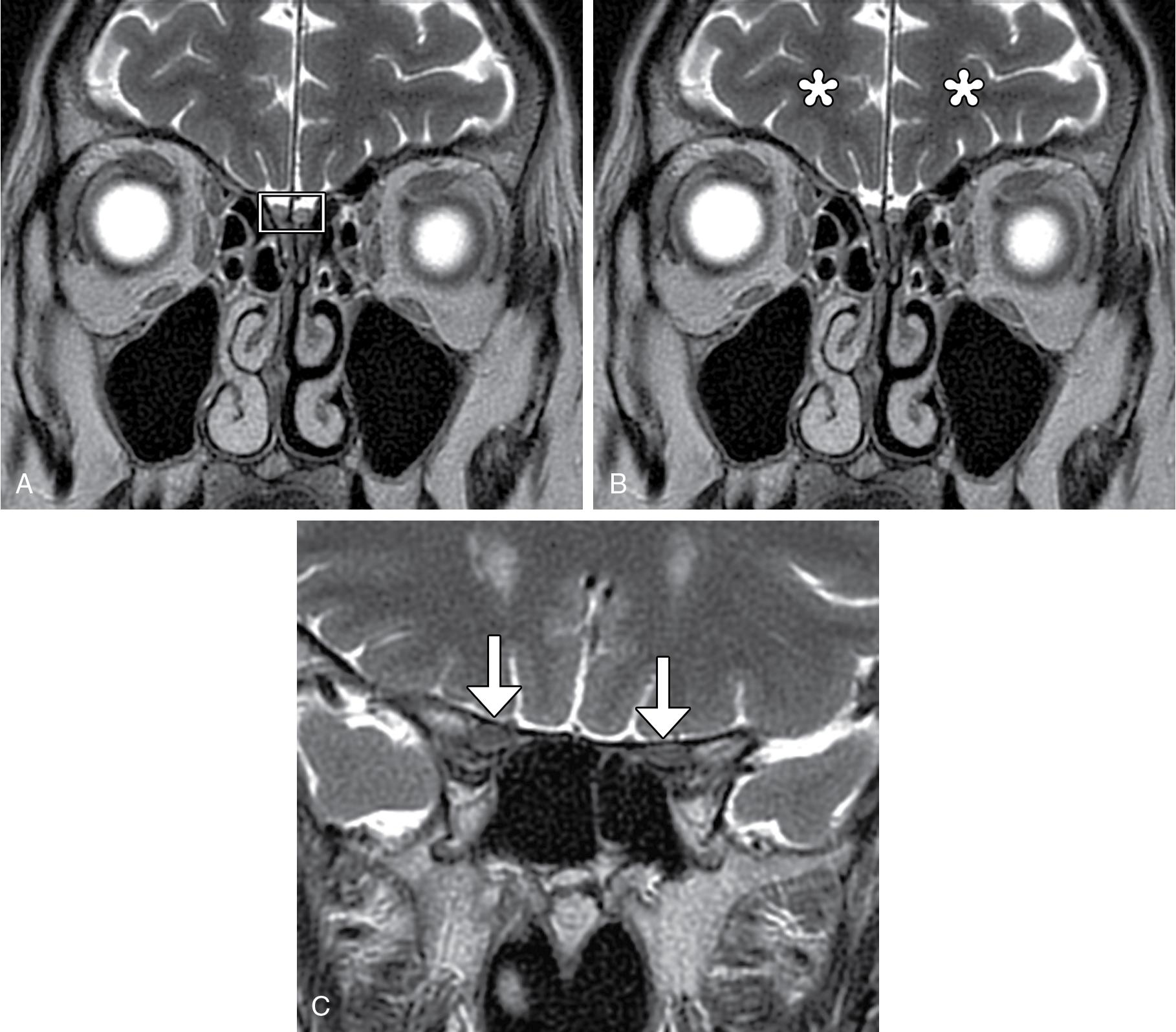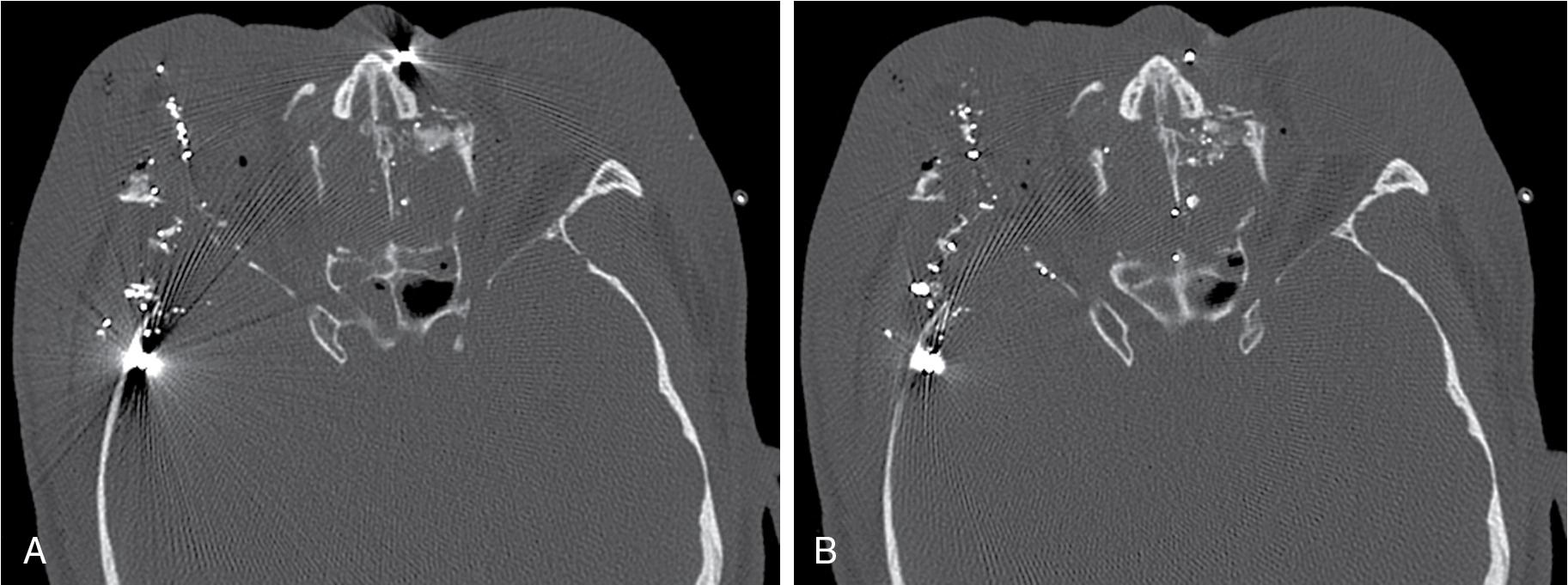Physical Address
304 North Cardinal St.
Dorchester Center, MA 02124
Patients with skull base fractures often have accompanying orbital and intracranial injuries, which warrant attention on dedicated imaging evaluation.
Computed tomography (CT) is the modality of choice for evaluating anterior skull base fractures and associated intracranial hemorrhage and localizing sites of cerebrospinal fluid (CSF) leakage for surgical repair. Magnetic resonance imaging (MRI) is useful for better delineating potential traumatic cephaloceles and brain injury.
Vascular imaging should also be considered in cases of severe craniofacial trauma. This chapter reviews the imaging features of the various types of anterior skull base fractures and associated complications.
The anterior skull base is composed of the orbital plates of the frontal bones anteriorly, cribriform plate of the ethmoid bone centrally, and planum sphenoidale and lesser wings of the sphenoid bone posteriorly. The orbital plates of the frontal bones consist of the orbital roofs and the fovea ethmoidalis. The fovea ethmoidalis is a medial extension of the orbital plate of the frontal bone and forms the lateral part of the ethmoid roof. The cribriform plates consist of thin medial and lateral lamellae. The medal lamella of the cribriform plate is horizontally oriented and contains punctate perforations that transmit the olfactory nerves, and the lateral lamella is vertically oriented. Along the superior aspect of the cribriform plate in the midline is the crista galli, a vertical bony projection to which the dura attaches. The lesser wings of the sphenoid bone form the medial boundaries of the optic canals and the superior boundaries of the superior orbital fissures. The optic canal transmits the optic nerve, and the superior orbital fissure transmits the superior ophthalmic vein, lacrimal nerve, frontal nerve, trochlear nerve, abducens nerve, oculomotor nerve, and nasociliary nerve. Inferior to the anterior skull base are the orbits, ethmoid and sphenoid sinuses, and superior to the skull base are the olfactory bulbs and frontal lobes. The anatomy of the anterior skull base is best depicted on coronal images ( Figs. 11.1 and 11.2 ).


Noncontrast high-resolution multidetector CT is the primary modality for evaluating fractures of the anterior skull base and intracranial hemorrhage and has a high accuracy for the detection of CSF leakage sites. Intravenous contrast can be administered for cases in which infection is suspected and there are otherwise no contraindications. A suggested CT protocol for skull base trauma includes bone window images with submillimeter multiplanar reformats that cover the maxillofacial skeleton, along with a head CT that includes soft tissue windows for assessing the intracranial contents. Implementation of metal artifact reduction software can be useful for patients with implants or foreign bodies such as ballistic fragments that tend to produce streak artifacts ( Fig. 11.3 ).

Magnetic resonance imaging without contrast can be performed for assessing potential traumatic encephaloceles and brain injury if there are no potentially hazardous retained metal foreign bodies but otherwise lacks the bony detail achieved with CT. A typical skull base MRI protocol consists of multiplanar T1- and T2-weighted sequences with up to 3-mm slice thickness. Diffusion-weighted imaging is useful for assessing axonal injury and infarcts in the brain, which could be related to trauma.
Become a Clinical Tree membership for Full access and enjoy Unlimited articles
If you are a member. Log in here